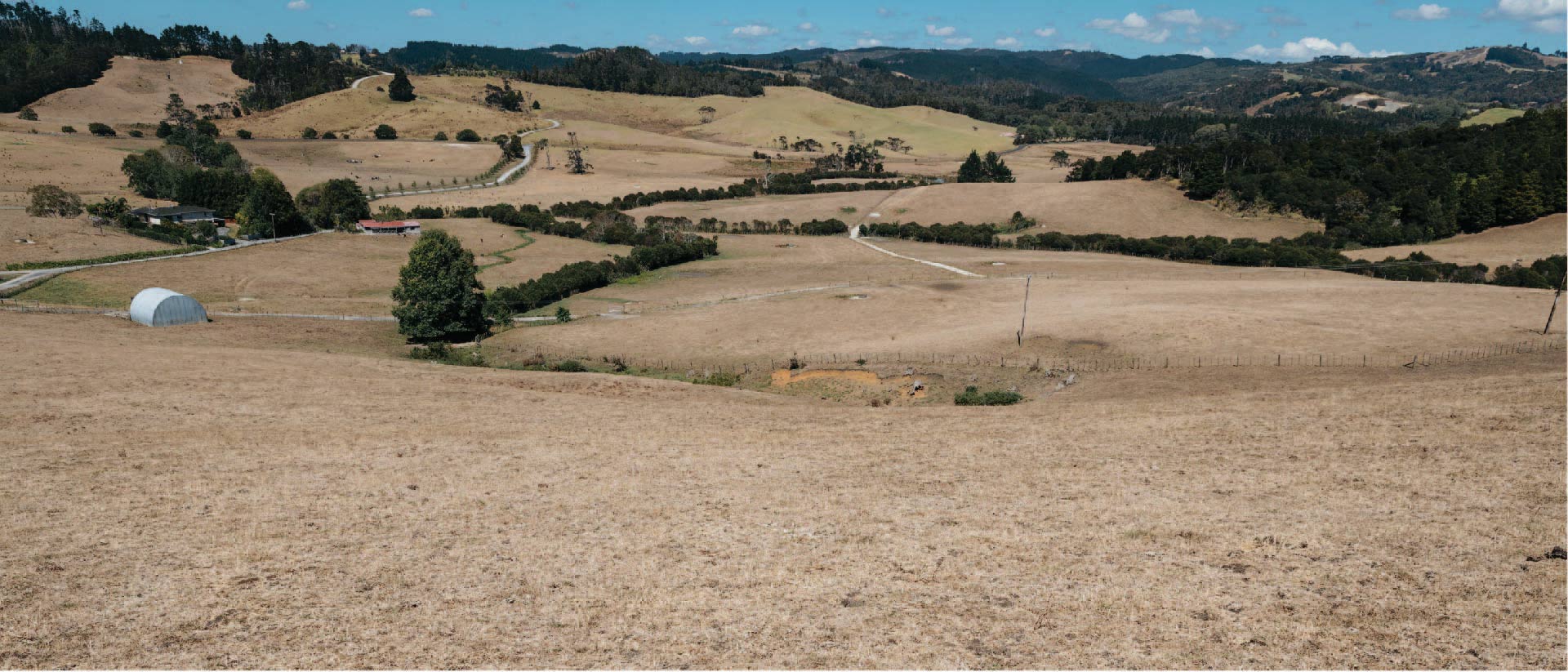It is likely that our current
emissions pathway will result in an average warming of 3.5 degrees Celsius or more by 2110. This will lead to a continued and catastrophic increase in the impacts and risks we are already facing across our region, such as flooding, heatwaves, drought, and coastal storms.

The effects of drought on pastures in Warkworth
For example, the drought Auckland experienced in 2020 is likely to become more common, with seasonal changes in rainfall patterns and more dry days projected.
The impacts of climate change will be stark for the
ecosystems on which we rely – from
ocean acidification and increasing pests and diseases to
mass extinctions.
The loss of our natural environment will play out further in large scale movements of people, and health implications from declining food sources, air, and water quality.
All warming will lead to significant changes to our world. To reduce the impacts we will face, we must continue the drive to keep within 1.5 degrees Celsius of warming globally. This plan explains our contribution.
We must plan for uncertainty, taking a precautionary approach and preparing for the impacts of a continued ‘business as usual’ emissions pathway.
This does not mean that we are taking every
adaptation action now.
Planning well together, with clear timelines for when decisions must be made, can avoid unnecessary investments or risks.
One way of doing this is through
Dynamic Adaptive Policy Pathways (DAPP).
